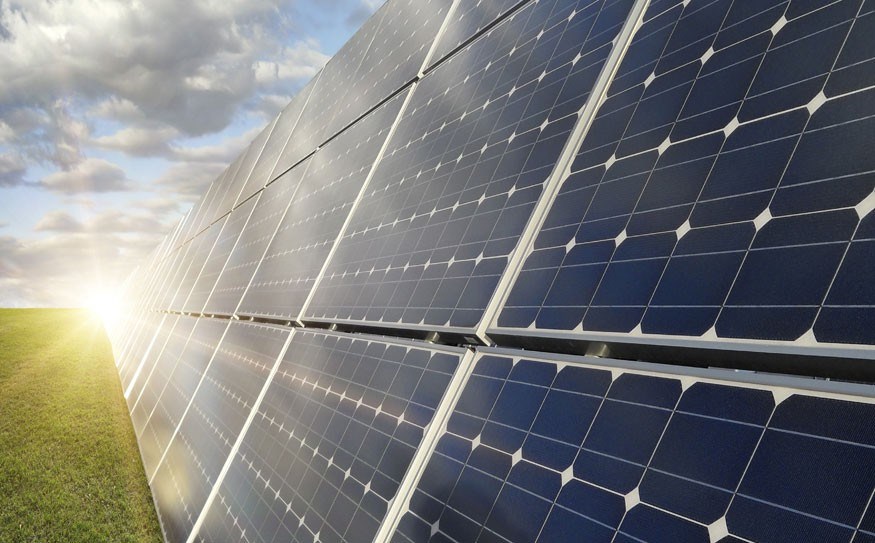For all the possible solutions to alleviating the effects of climate change, it's doubtful that any kind of "back to nature" approach will work. Sadly, there are too many of us on the planet and the obstacles to global cooperation are too big.
That's not to say a return to nature isn't in the cards for people in the future, just that it's more likely to be forced on us if all other efforts fail.
Plus, the natural solution is slow and with concentrations of CO2 and other greenhouse gases increasing rapidly we don't have a lot of time left to fix the problem — if recent natural disasters are any indication, anyway.
The solution, as uncomfortable as it makes people, may be to use science and technology to terraform the planet on a massive scale and maintain it at an optimal state.
A lot of the science already exists. We know we can seed oceans with iron to create blooms of phytoplankton that will absorb CO2 and release oxygen. We know we can seed clouds with various minerals, or use ground-based lasers, to make it rain in areas that need it, and cover the ground underneath with biochar that will lock more water into the soil, reducing the need for chemical fertilizers that make their way to the ocean to create oxygen-starved dead zones.
We could use huge satellites to block small amounts of solar radiation, which could have a slight cooling effect on the planet, or to reflect solar radiation downwards to extend the growing season in some parts of the world that could use an extra hour or two of light.
The world runs on electricity, and we know we can produce a lot of it using wind and solar energy. Nuclear energy makes people nervous, but we're pretty close to creating pebble fuel reactors and low fission silo reactors that are in no danger of meltdowns and produce waste that's only radioactive for decades as opposed to thousands of years.
Waste is a huge issue, and while we do our best to reduce and recycle, we've still littered our oceans and waterways with all kinds of plastic waste that's having an impact on the ecosystem. However, Denmark and other Scandinavian countries have created a system where around 42 per cent of waste is recycled and over 52 per cent incinerated to produce electricity while capturing toxic and greenhouse gases in the process — gases that eventually leach out of landfills anyway.
The future of cars is electric, even for long-distance trips. A few weeks ago Tesla, which is making some cool electric cars these days, showed off a new battery swap system that could exchange the spent battery pack out of an electric vehicle for a fully charged one in a matter of minutes. The great thing about that solution is that it creates the opportunity for unlimited range vehicles without inventing a new type of fast-charging ultracapacitor battery, while also alleviating one of the major concerns that people have when it comes to purchasing EVs and hybrids — the cost of replacing their batteries when they wear out.
Cities will also need to be rebuilt and redesigned. Every rooftop could be covered with grass and other vegetation to reduce solar heating, while walls and windows that get sun exposure will soon be coated with materials that allow them to cheaply generate electricity for the building. Self-driving vehicles will help to alleviate traffic problems and pollution. As well, infrastructure has to be upgraded to handle water, wind, fire, hurricanes, tornadoes, tsunamis, earthquakes and anything else nature can throw our way short of a meteor.
Electrical systems will one day be upgraded into a smart grid where homes and businesses can both use and generate electricity. With large storage batteries, including units that are being tested for homes, electricity can be stored during times of low power generation (e.g. overnight if you depend on solar, or during low wind if you depend on a windmill) the same way water can be stored behind a dam to generate power 24/7.
None of these things will be cheap or easy, but consider the cost of the recent floods in Calgary and Toronto, the hurricane in New York/New Jersey, the forest fires in Colorado and Quebec and other recent natural disasters.
The global cost of natural disasters since 2000 is around $2.5 trillion according to the United Nations, while 2011 was the costliest year on record with $380 billion in damage — driven mostly by the earthquakes in Japan and New Zealand. In Canada, the cost of natural disasters is around $2 billion annually while the Federation of Canadian Municipalities estimates that there is a national "infrastructure deficit" of $200 billion.
Given the current state of our federal and provincial budgets, and government budgets worldwide, there's probably little appetite for a massive, world-changing terraforming project, but with the cost of doing nothing rising anyway it could be one of the best investments we could make while employing tens of millions of people.
To read more about the ongoing terraforming debate, search for articles at Slate.com, Wired.com, io9.com and Popular Science (look for a recent article titled "How Earth-Scale Engineering Can Save the Planet").




